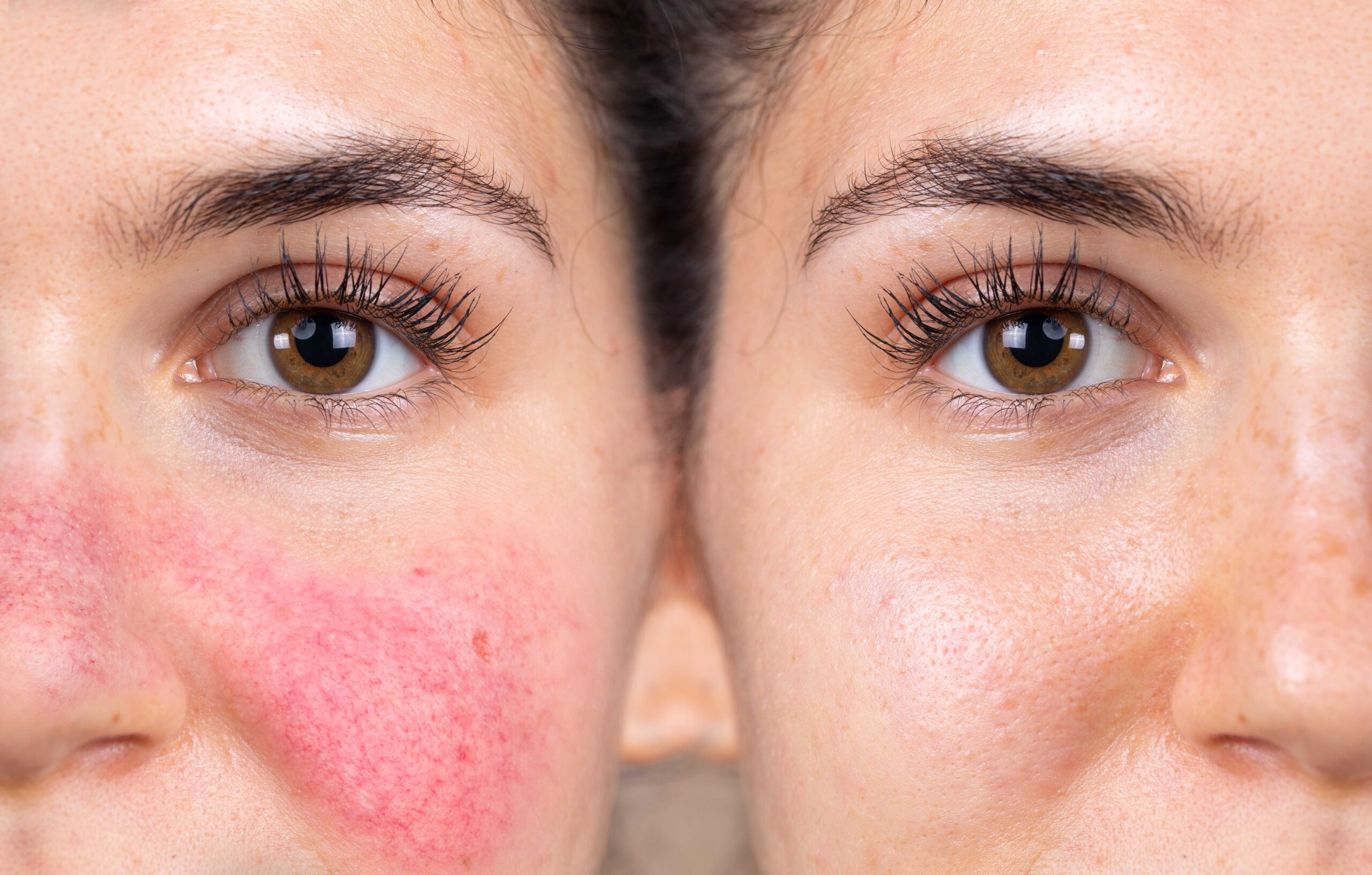
April is Rosacea Awareness Month, a time dedicated to raising awareness and understanding about this chronic and often misunderstood skin condition. Rosacea affects an estimated 16 million people in the United States alone, yet many people with the condition may not even realize they have it. This month is an opportunity to educate people about the signs, symptoms, and treatment options for rosacea.
WHAT IS ROSACEA?
Rosacea is a chronic inflammatory skin condition that affects the face, causing redness, flushing, and visible blood vessels. It can also cause bumps and pimples, as well as eye irritation and thickening of the skin. Rosacea typically develops in adults between the ages of 30 and 50, and it is more common in women than men.
SYMPTOMS OF ROSACEA
- Redness and flushing on the cheeks, nose, forehead, and chin
- Visible blood vessels on the face
- Bumps or pimples on the face that may be filled with pus
- Burning or stinging sensations on the skin
- Dry or rough skin texture
- Eye irritation, such as redness, burning, and itching
WHAT CAUSES ROSACEA?
While the exact cause of rosacea is not fully understood, it is thought to be a combination of genetic and environmental factors, such as sun exposure, stress, and certain foods and drinks. Some triggers that can exacerbate rosacea symptoms include:
- Sun exposure
- Hot or cold weather
- Stress
- Alcohol
- Spicy foods
- Exercise
- Certain medications
MANAGING ROSACEA SYMPTOMS
While there is no cure for rosacea, there are several ways to manage and reduce symptoms. Here are some tips to help manage rosacea:
- Wear sunscreen: Sun exposure is a common trigger for rosacea, so it's important to wear sunscreen with at least SPF 30 every day, even on cloudy days.
- Identify triggers: Keep a journal of your symptoms and try to identify triggers that cause flare-ups. Avoiding triggers can help reduce symptoms.
- Gentle skincare: Use gentle, fragrance-free skincare products and avoid harsh exfoliants or scrubs that can irritate the skin. Moisturize regularly to help reduce dryness and redness.
- Seek professional help: Our dermatologists can provide an accurate diagnosis and recommend treatment options tailored to your specific symptoms and triggers. Treatment options may include topical or oral medications, laser therapy, or other procedures.
TREATMENT OPTIONS FOR ROSACEA
While there is currently no cure for rosacea, there are several treatment options available to manage symptoms. Your dermatologist may recommend a combination of topical medications, oral antibiotics, or laser therapy, depending on the severity of your condition. Additionally, there are several lifestyle changes you can make to help manage your rosacea, such as avoiding triggers like spicy foods and alcohol, protecting your skin from the sun, and using gentle skincare products.
WHEN TO COME SEE US?
Rosacea can be a frustrating and sometimes embarrassing condition, but it’s important to remember that it is a common skin condition that can be managed with proper care and treatment. If you think you may have rosacea or are experiencing symptoms, contact us today. Our team of experts are here to provide specialized care and treatment to help with your concerns.
Call or book online if you would like to schedule a visit with one of our rosacea experts.
